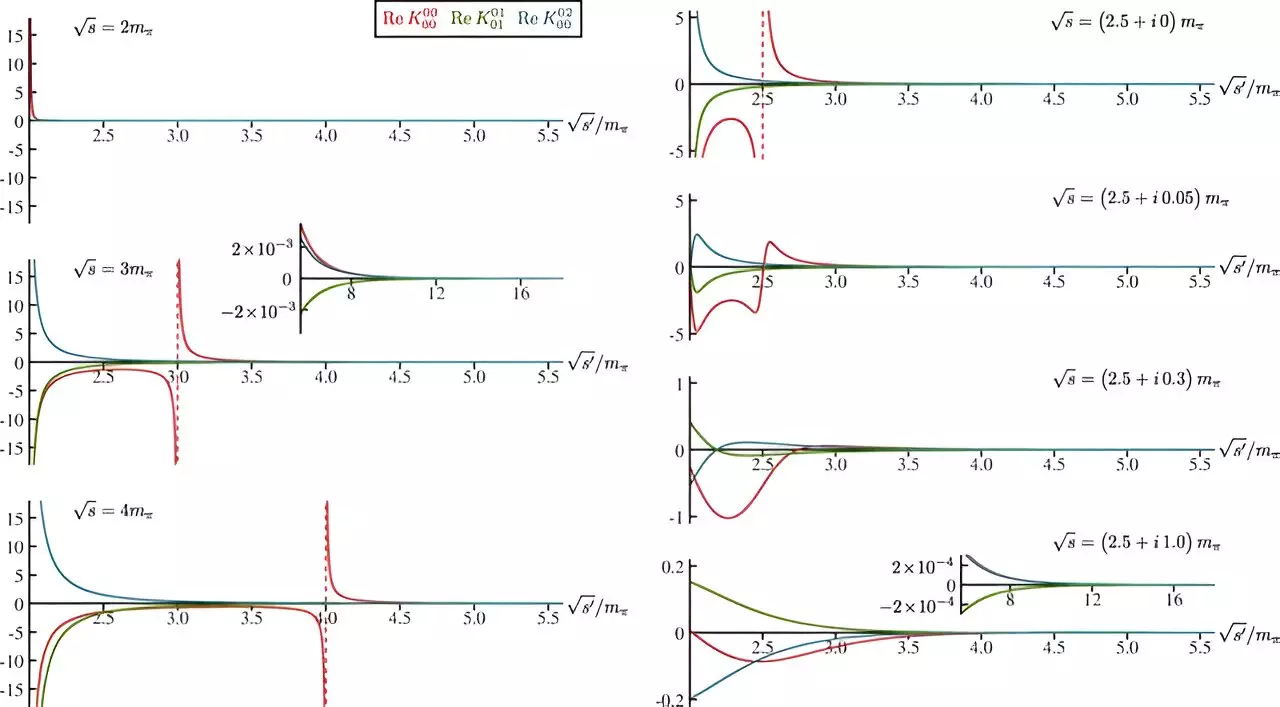The strong interaction is one of nature’s essential forces, yet its mysteries continue to elude even the most seasoned physicists. Among the myriad particles governed by this formidable force is the sigma meson, a less celebrated cousin of the protons and neutrons that comprise atomic nuclei. The sigma meson, although fleetingly existing, plays a crucial role in our understanding of nuclear interactions. Recent work led by researchers at the U.S. Department of Energy’s Thomas Jefferson National Accelerator Facility has made significant strides in unlocking some of the enigmatic properties of the sigma meson, bringing us a step closer to comprehending one of the fundamental forces of nature.
Revealing the Sigma Meson
Traditionally, the sigma meson has been somewhat of a pariah in the particle physics community, often regarded as the “weird guy” due to its elusiveness and instability. Unlike its more robust kin, it rapidly decays into pions—a phenomenon that occurs in mere fractions of a second, making it notoriously difficult to study through conventional accelerator experiments. As Jozef Dudek, one of the researchers, aptly puts it, “We couldn’t reliably determine its properties with simple traditional methods.” This quote captures the frustration of many physicists who have long grappled with the sigma meson’s obstinacy.
Dudek, alongside fellow researchers Arkaitz Rodas Bilbao and Robert Edwards, has turned the tide on this long-standing conundrum. With a mass that is approximately half that of the proton, the sigma meson not only represents a unique challenge but also embodies a gateway to understanding how particles interact at deeper levels. As Rodas Bilbao emphasizes, “How do the particles that we are made of stick together?” This is not merely an academic query; it touches the essence of our very existence and composition.
Turning to Computational Power
As the old adage goes, “Necessity is the mother of invention,” and in the case of sigma meson research, that necessity led to the innovative use of supercomputing. With calculations that would have taken a conventional laptop centuries to complete, supercomputers have enabled physicists to simulate pion-pion interactions and study the sigma meson more effectively. This technological leap has not only accelerated research timelines but has also broadened the horizons of what is computationally feasible in theoretical physics.
The collaboration among Dudek, Rodas Bilbao, and Edwards highlights the importance of interdisciplinary teamwork and advanced technological resources. Their work utilized the principles of quantum chromodynamics (QCD), the mathematical framework governing the strong interaction, while introducing new mathematical constraints—known as “dispersion relations”—to refine their model. This is groundbreaking because traditionally, solving QCD analytically has posed insurmountable challenges.
Collaboration and the Spirit of Innovation
One of the most compelling aspects of this research is the cooperative spirit that pervades it. The authors are part of the Hadron Spectrum Collaboration, which assembles multidisciplinary teams to tackle complex problems. As Dudek notes, “It’s this idea that you combine skill sets and work together to solve problems that neither one could solve on their own.” Such collaborative efforts are crucial in advanced scientific research, where innovation often flourishes in environments that value shared expertise.
Edwards’ leadership in software development under the SciDAC program illustrates how advancements in computational science can have profound impacts on fundamental physics research. By creating the necessary tools and algorithms for high-performance computing, they’ve set the stage for future breakthroughs and enhanced the ability for theorists and experimentalists to synergize their work.
Charting the Future of Sigma Meson Research
The results of this foundational research are not merely academic; they pave the way for future investigations into not just the sigma meson but also other exotic particles, such as the elusive kappa meson. The research team has outlined a clear roadmap forward, proposing further studies that will delve into the underlying structure of the sigma meson. However, they acknowledge that with every advancement comes new hurdles. Issues such as the mass of quarks being artificially inflated in calculations are acknowledged as critical points that need to be rectified to ensure that future research reflects the true nature of these particles.
As Dudek astutely points out, continued refinement of computational parameters is paramount, signaling that while the first step is a pivotal achievement, the journey toward understanding the sigma meson—and by extension, the strong force—is far from over. The implications of such knowledge extend beyond academic curiosity; they resonate deeply within fields such as cosmology and particle physics, intertwining our understanding of the universe at the most fundamental level.


Leave a Reply